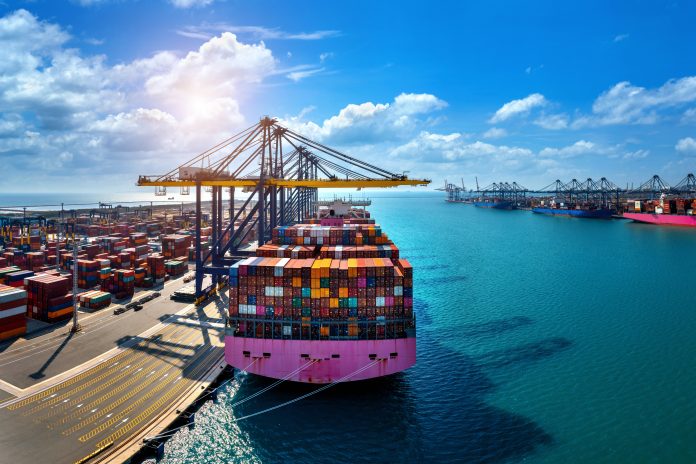Sri Lanka, a bio diverse island nation, faces mounting challenges due to climate change, particularly in the context of international trade. As global temperatures rise, driven by phenomena such as El Niño and anthropogenic activities, Sri Lanka’s economic sectors and trade flows are increasingly vulnerable.
The World Bank estimates that by 2050, nearly 19 million Sri Lankans could live in areas classified as moderate to severe climate hotspots. This summary explores how Sri Lanka can integrate climate considerations into its trade policies to balance economic growth with environmental sustainability and achieve its net-zero emissions target by 2050.
The Impact of Climate Change on Trade
Extreme Weather Events and Agriculture
Sri Lanka’s position among the top ten nations most vulnerable to extreme weather highlights the risks of climate-induced disruptions. Floods, droughts, and storms damage infrastructure, disrupt transportation networks, and reduce agricultural yields. Agriculture, a cornerstone of Sri Lanka’s economy, is especially sensitive, as rising temperatures and erratic weather patterns exacerbate resource scarcity. Studies suggest that a 1°C temperature rise could lead to a 5.7% decline in agricultural export growth for low-income economies.
Sea-Level Rise and Tourism
Rising sea levels threaten coastal infrastructure, particularly vital ports and agricultural lands. This issue also impacts the tourism sector, a significant contributor to Sri Lanka’s GDP. Coastal tourism faces long-term threats from rising seas and storms, potentially leading to an annual loss of up to USD one trillion globally by 2050.
Supply Chain Vulnerabilities in Manufacturing
While manufacturing is less vulnerable to climate change than agriculture, sectors reliant on climate-sensitive inputs, such as food processing, face challenges. Extreme weather events can disrupt global supply chains, as seen in the 2021 floods in Thailand, which caused USD 42.2 billion in damages.
Evolving Comparative Advantages
Climate change will alter global comparative advantages, with countries like Sri Lanka in South Asia potentially facing export volume declines of up to 6% by 2060 under a 2.5°C warming scenario. Dependence on commodity exports and lack of diversification further exacerbate vulnerabilities.
International Trade: A Double-Edged Sword
Trade can either worsen climate change or act as a solution. Unsustainable practices like energy-intensive industries contribute to emissions, while trade also facilitates the diffusion of clean technologies. The WTO estimates that reducing tariffs on environmentally-friendly goods could increase global GDP by 0.8% by 2030, proving that trade can support both economic and environmental goals.
Sri Lanka has an opportunity to use trade as a tool for growth and sustainability. By promoting environmentally-preferable products and integrating green practices, the country can strengthen its global competitiveness while addressing climate concerns.
Strategies for Integrating Climate Considerations into Trade Policy
Promoting Sustainable Trade Practices
• Environmental Goods and Services: Sri Lanka can expand exports in renewable energy technologies, organic agriculture, and green building materials. For example, the global organic food market is expected to grow from USD 228.35 billion in 2024 to USD 658.38 billion by 2034. With its rich agricultural heritage, Sri Lanka is well-positioned to capitalise on this demand.
• Eco-Tourism: Leveraging its natural beauty and ecosystems, Sri Lanka can attract eco-conscious travellers by promoting initiatives like the Pekoe Trail and adopting sustainable tourism practices.
• Green Building Materials: The production and export of eco-friendly construction materials such as bamboo and recycled plastic lumber offer new opportunities. Projects like ITC Ratnadipa demonstrate Sri Lanka’s potential to attract green investment.
• Trade in Services: Services such as weather forecasting, logistics, and health insurance can play a key role in mitigating climate risks.
Leveraging Trade for Decarbonisation
Sri Lanka can negotiate trade agreements that facilitate access to markets for climate-friendly products while advocating for strong environmental clauses. Regional trade initiatives, such as tariff reductions on environmental goods by APEC nations, can serve as templates for Sri Lanka to pursue.
Eco-Labelling and Certification
Transparent eco-labelling schemes can enhance the value of Sri Lankan exports by appealing to environmentally conscious consumers. Programmes aligned with international standards, like ISO 14020, can build trust and boost market share.
Life Cycle Assessments and Circular Economy
Encouraging businesses to conduct life cycle assessments can identify environmental hotspots and reduce waste. By-products generated during production can serve as raw materials for other industries, contributing to a circular economy.
Challenges and Opportunities
Challenges
• Trade-Offs: Balancing trade liberalisation with environmental protection requires careful planning.
• Capacity Constraints: Sri Lanka faces limitations in technical expertise, human resources, and financial support. Strengthening institutional capacity will be crucial.
• Non-Tariff Barriers: Stringent environmental regulations in foreign markets, such as the EU, could hinder Sri Lankan exports. Transparent negotiations and capacity-building are essential to meet these standards.
Opportunities
• Access to Green Markets: Adopting sustainable practices can unlock new market opportunities for Sri Lanka’s exports.
• Innovation and Competitiveness: Climate-focused trade policies can incentivise clean technology adoption and enhance Sri Lanka’s global competitiveness.
• Economic Resilience: Sustainable trade practices reduce inefficiencies and promote productivity, ensuring long-term economic benefits.
Practical Steps for Implementation
Strengthening Institutional Capacity
Government Ministries need dedicated resources and training to implement climate-conscious trade policies. Inter-ministerial coordination mechanisms can streamline efforts.
Engaging Stakeholders
Public-private partnerships and capacity-building programmes for exporters can drive innovation and adoption of sustainable practices.
Developing Trade Finance Instruments
Innovative financing mechanisms, such as preferential loan rates for green businesses, can incentivise sustainable trade.
Monitoring and Evaluation
Regular monitoring of trade policies is critical to ensure alignment with climate goals. Transparent reporting mechanisms and stakeholder engagement are key to this process.
International Cooperation
Partnerships with multilateral institutions, development agencies, and other nations can provide technical expertise, financial support, and knowledge-sharing opportunities.
Conclusion
Integrating climate considerations into trade policy is vital for Sri Lanka’s sustainable future. By promoting sustainable practices, addressing climate impacts on trade flows, and leveraging trade for decarbonisation, Sri Lanka can achieve its economic and environmental aspirations. This approach not only positions the nation as a global leader in sustainable development but also enhances its economic resilience in a rapidly changing world.


